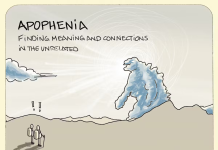By Anushka Verma
With the exponential growth of the World Wide Web, our lives have changed from having internet as a part of it to becoming a part of the internet ourselves. Almost all aspects of our lives are interconnected to the internet. The WWW itself has now become a web in truest sense of the word; one can get entangled in the web of information and go from one site to another by a single click. Linking and hyperlinking webpages allows the user to navigate the plethora of information available in a structured manner. But what one often disregards in the throes of the information accessibility is the Intellectual Property issues that arise with linking.
Free access to information is often justified by the free linking ethos of the internet, a principle according to which the mere presence of a site on the web gives an implied permission to link that site. Tim Berners Lee, the inventor of the WWW has been noted to “refuse” permission to link his website, as the permission is not needed in the first place. The concept holds value for the broad use of it can triumph over any intellectual property claim that may be brought relating to linking. However, there is a growing concurrence among various jurisdictions for the principle to be applied only in some types of linking.
Types of Linking:
- Surface Linking: The hyperlink provided for on the provider webpage (the webpage which the user is currently viewing) is of the homepage of the target webpage (the webpage to which the link is alluding). In surface linking, a user can click the link provided and will be directed to the target webpage. An example may be iprmentlaw.com.
- Deep Linking: The provider webpage provides a link which, when clicked by the user, leads to a specific point within the target webpage. An example of deep linking is https://iprmentlaw.com/2020/08/10/report-iprmentlaw-virtual-conference-2-0-legal-challenges-faced-by-the-music-industry-doing-business-in-india/.
- Inline Linking: A more complicated method of linking arises in the form of Inline Linking, where the content from the target webpage is embedded within a provider webpage. An example of this is blogs which embed YouTube videos on their website. What is important to note here is that the embedded content is not stored on the provider site. One can view the content from the provider website, without being redirected to the website which is the source of the content.
- Framing: By using framing, a website can be divided into multiple non-overlapping screens which may show different webpages, and may even be navigated from the provider webpage without leaving the website. It may appear to the user that the content is all present in the provider webpage and has led to contentious issues.
Intellectual Property Concerns:
The free linking ethos has generally been accepted in cases of surface linking and deep linking. Usually the only problem that arises with deep linking is the loss of footfall on the homepage of the target website, which may lead to loss of revenue from ads. However, the IP concerns are often raised with inline linking and framing.
- Copyright
Webpages usually have copyrighted content, like text, images, GUI, etc. In the case of inline linking and framing, if a copyrighted content that is freely available is shown on the webpage of the provider, it may not infringe the copyright. However, in case content that has restricted access is shown on the provider webpage, it may lead to disputes. Similarly in case the target website is framed on the provider website, it may also lead to question of whether or not the work has been attributed to its original source.
- Trademark
Many times, picture trademarks are used as hyperlinks to the webpages of the target website. A case may be initiated if the provider website is confusing/misleading the users to believe that it is associated to the target website.
Position in EU, USA and India:
- European Union
While there is no legislation that specially deals with issues of linking, case laws in the EU have led to substantial development. CJEU’s jurisprudence on linking has essentially revolved around the interpretation of the author’s exclusive right to authorize or prohibit any “communication to public” of their work, mentioned in Article 3(1) of the InfoSoc Directive 2001/29/EC. The Svensson case categorically laid down that hyperlinking to works that are already freely accessible to the public does not constitute infringement. The CJEU explained that while the term ‘communication’ is to be construed in a broad sense, ‘public’ must be interpreted as new public. By new public, it was meant that if the work is made accessible to anybody to whom it was originally not made accessible by the author, it has been communicated to a new public. By extension, if a link allows users to circumvent a restriction that was put in place to restrict access, like a firewall or encryption, such work will have been communicated to a new public, and hence would make the provider website liable. The CJEU has further held in the GS Media case that where the work has been made freely available without the consent of the author, and links are provided to the work for the pursuit of a financial gain, such an act would constitute an infringement on the author’s rights. The CJEU has, in the 2017 Filmspeler judgement further expanded the scope of “communication to public” beyond the posting of links on web pages to include the sale of a multimedia players with pre-installed add-ons containing links to websites with unauthorised 3rd party copyright works.
In April 2019, the European Union passed the Directive on Copyright in Digital Single Market. Article 15 of the Directive, termed the ‘Link Tax’, provides that the anyone using inline linking, where a snippet of the content is shown on the providers webpage, shall have to first take license from the publisher. This means that the automatic link previews (including heading, picture and a few lines of the content) that appears when one shares links would require a license. The provision has sparked controversy and debate and it remains to be seen what will be its impact on the internet service providers like Google.
- United States of America
In USA, link liability may be regulated by the anti-circumvention laws prescribed in the Digital Millennium Copyright Act (DMCA). Section 1201 of the DMCA provides that any technology that enables others to circumvent technological measures put in place by copyright holders to control access to or uses of their copyright work is contrary to law. Subsequently, if a provider website provides a deep link that circumvents restrictions, or hosts, through inline linking or framing any work that is protected in such a manner will be made liable for copyright infringement. The mere hyperlinking to a website does not serve as copyright infringement as it has been held akin to providing driving directions.
2 important cases have developed tests to determine copyright infringement in the case of inline linking and embedding. The “Server Test” was laid down by the 9th Circuit in Perfect 10, Inc v. Amazon[i]. It held that a website provider can be held directly liable for infringement only when content is stored on its website, and not if it has only been embedded on the site. The former case is an infringement as it involves making copies of the copyrighted content. However, the court in Goldman v. Breitbart[ii] denied the reasoning behind the ‘Server Test’. It held that even without storing, embedding the content (like a picture) on a webpage can be held to be a violation of the owner’s right to display, as guaranteed by Section106(5) of the Copyright Act. Therefore, jurisprudence in the US is not consistent and the cases are mostly assessed on their independent factual matrix, often by examining conditions like knowledge of the provider vis-à-vis rights of the owner.
- India
The jurisprudence in India regarding any form of linking is not developed. The question of deep linking liability in freely available works may not be contentious as the work is not reproduced by provider website and the user is in fact redirected to the original work. The author believes that any discussion regarding the development of link liability in cases of deep linking and framing shall inevitably revolve, as in the EU, around “communication to public”. Communication to public is one of the exclusive rights to authors under Section 14 of the Indian Copyright Act. According to section 2(ff), “communication to the public” means making any work available for being seen or heard or otherwise enjoyed by the public directly or by any means of display or diffusion other than by issuing copies of such work. An argument can be culled out that by embedding or framing copyrighted content on the provider website, the work is being made available to the public, but actual copies are not issued by the provider website. Therefore, inline linking or framing may infringe the exclusive right of an author to communicate the work to public in India.
Conclusion:
It must be established that the concerns that inline linking and framing can constitute actionable misappropriation of intellectual property are legitimate and must be considered by keeping in mind and balancing interests of the following factors: the free access space of the internet, the rights of an author to authorise communication/display of their work, the right of a third party to provide links on their websites, the type of content hosted, the purpose of such linking whether commercial or not. The list is not exhaustive and a lot of it also depends on the judicial and legislative jurisprudence of the forum country.
Image: here.
[i] Perfect 10, Inc v. Amazon 508 F.3d 1146
[ii] Goldman v. Breitbart News Network, LLC, 302 F. Supp. 3d 585, 590 (S.D.N.Y. 2018)
















![Breaking: Delhi High Court dismisses the 2006 suit filed by IPRS against Aditya Pandey and others, imposes costs of INR 2 Lacs [READ JUDGEMENT]](https://iprmentlaw.com/wp-content/uploads/2018/04/IPRS-100x70.png)
